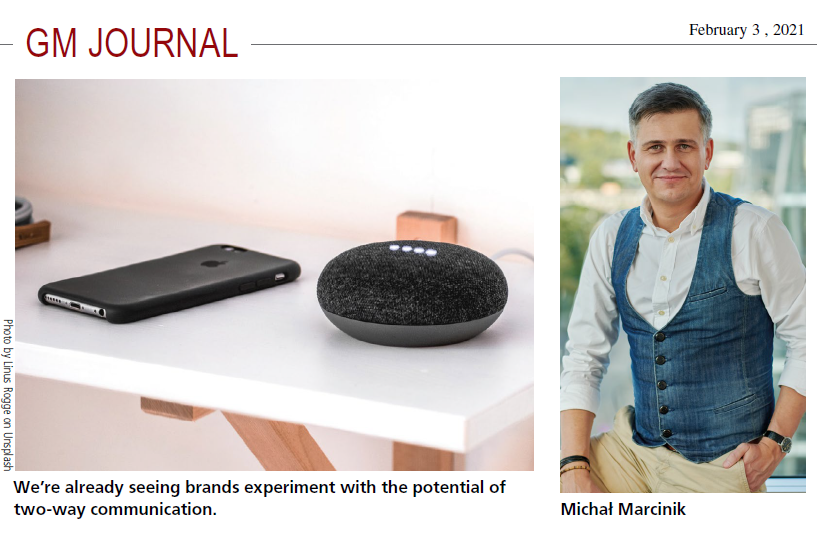“The transformation will ensure that listening becomes even more personal” – said Michal Marcinik in RadioWorldMagazine Commentary
AUDIO INTERACTIVITY
Listening to audio is no longer a passive activity as consumers are increasingly comfortable integrating their voice assistants and smart speakers into their everyday lives. A Juniper report revealed that consumers are expected to interact with voice assistants on 8.4 billion devices across the globe by 2024, up from 4.2 billion at the end of 2020. Smart speaker adoption is growing particularly quickly, indicating that users trust the technology and find it beneficial. Worldwide smart speaker sales reached almost 147 million in 2019 — an increase of 70% on the previous year — and by 2027 the global smart speaker market is projected to be worth an impressive $19 billion.
In the U.K., more than a quarter of consumers already own a smart speaker, and this proportion looked set to grow over the 2020 Christmas period, with almost 20% of people planning to gift a digitally connected device. Whether it’s Amazon’s Echo, Google’s Nest or Apple’s HomePod, smart speakers are becoming an accepted feature of the modern home.
Smart speakers and voice assistants can respond — in a conversational manner — to hundreds of different commands, meaning audio is gaining a strong sense of utility for users. Asking Siri for an update on lockdown restrictions or instructing Alexa to play a favourite radio show is no longer a novelty, but practical and productive use of established technology. And the audio landscape is set to develop in more complex ways, with a view to providing smart speaker users with greater flexibility, such as booking doctors’ appointments, purchasing event tickets or adding items to shopping lists.
INITIATING TWO-WAY COMMUNICATION
Audio interactions are still largely initiated by the user, however, with advances in artificial intelligence and machine learning, as well as the connectivity promised by the arrival of 5G, the potential for smart speakers to start the conversation first isn’t far off. We’re already seeing brands experiment with the potential of two-way communication.
We strongly recommend the entire article online or in RadioWordMagazine, February 3, 2021.




